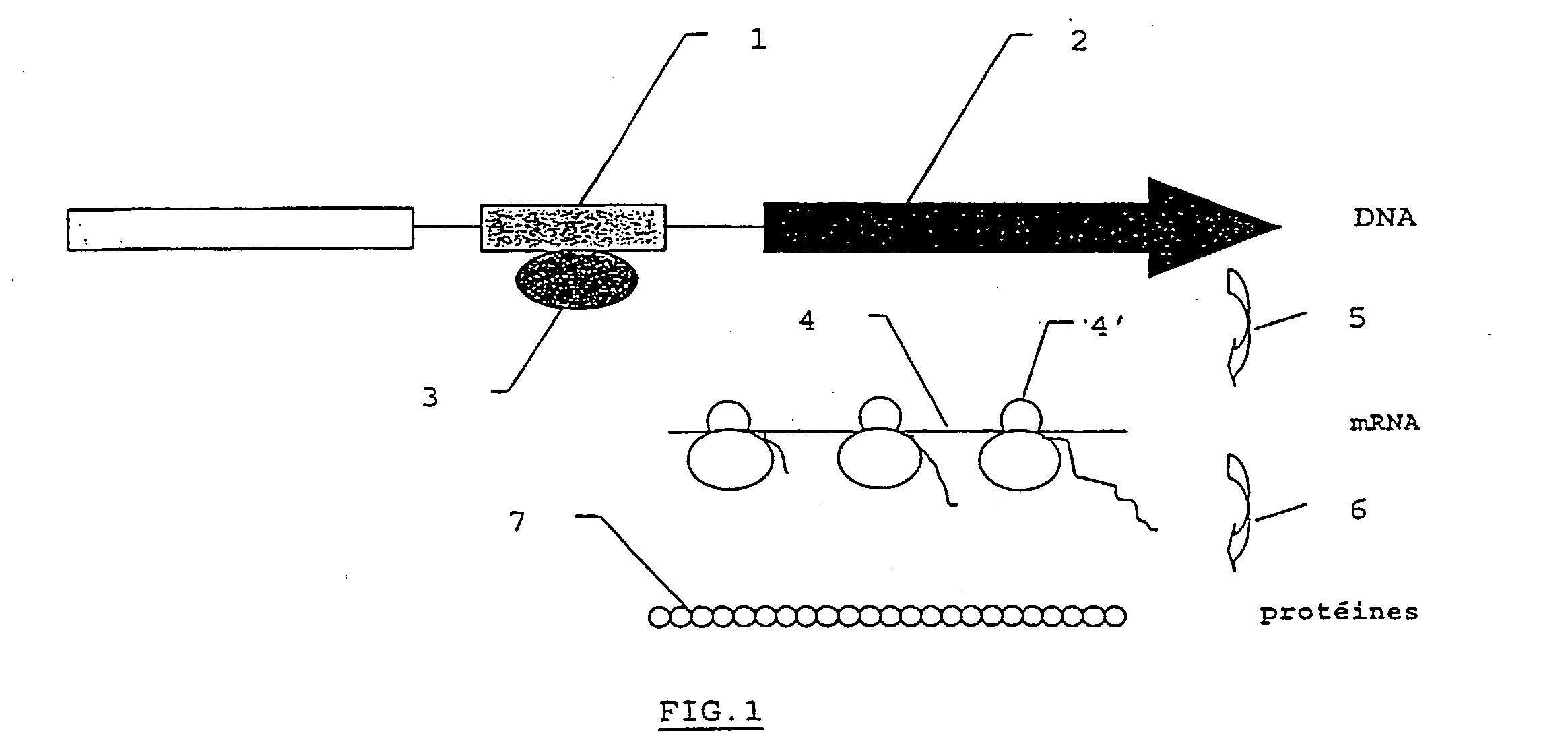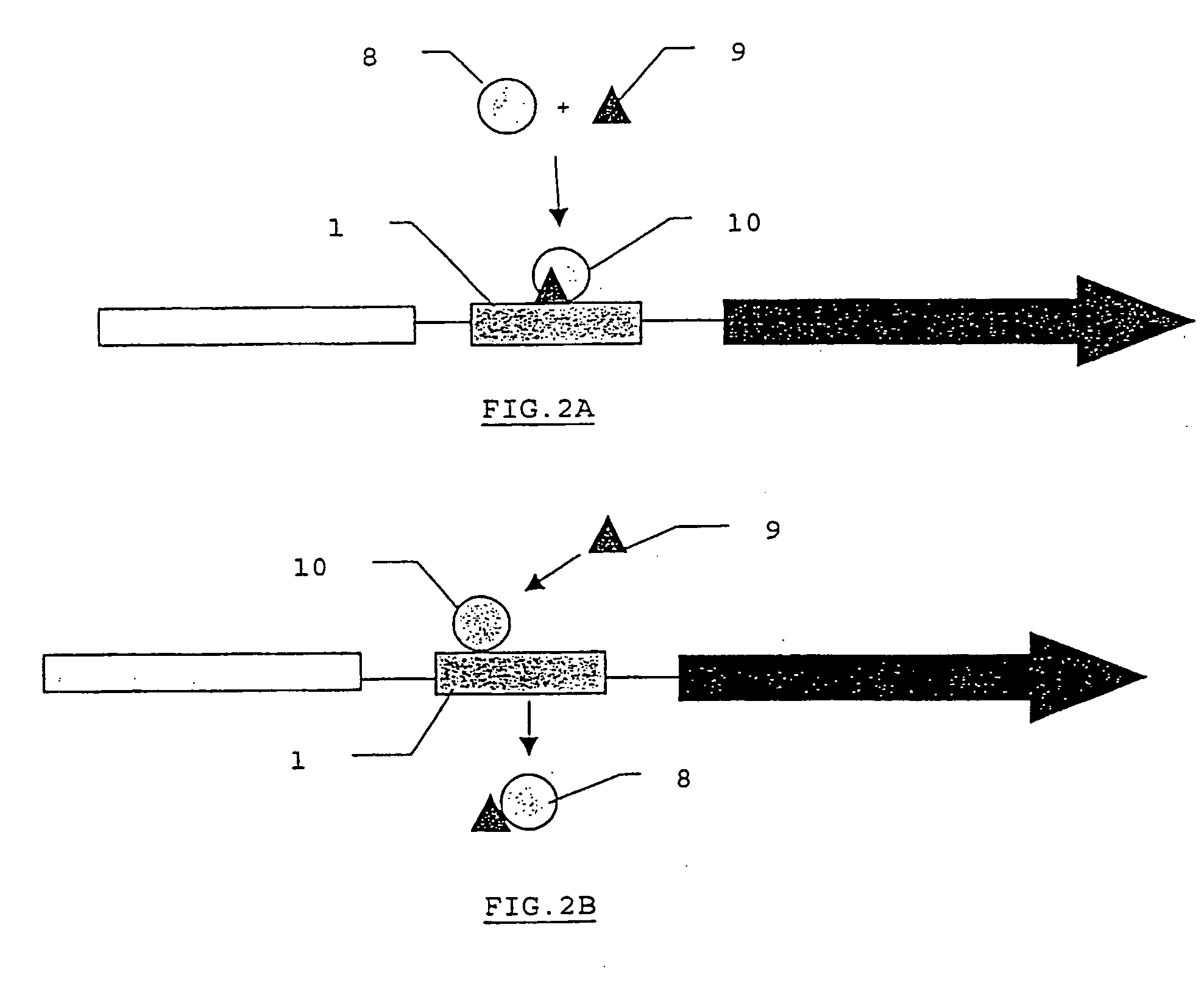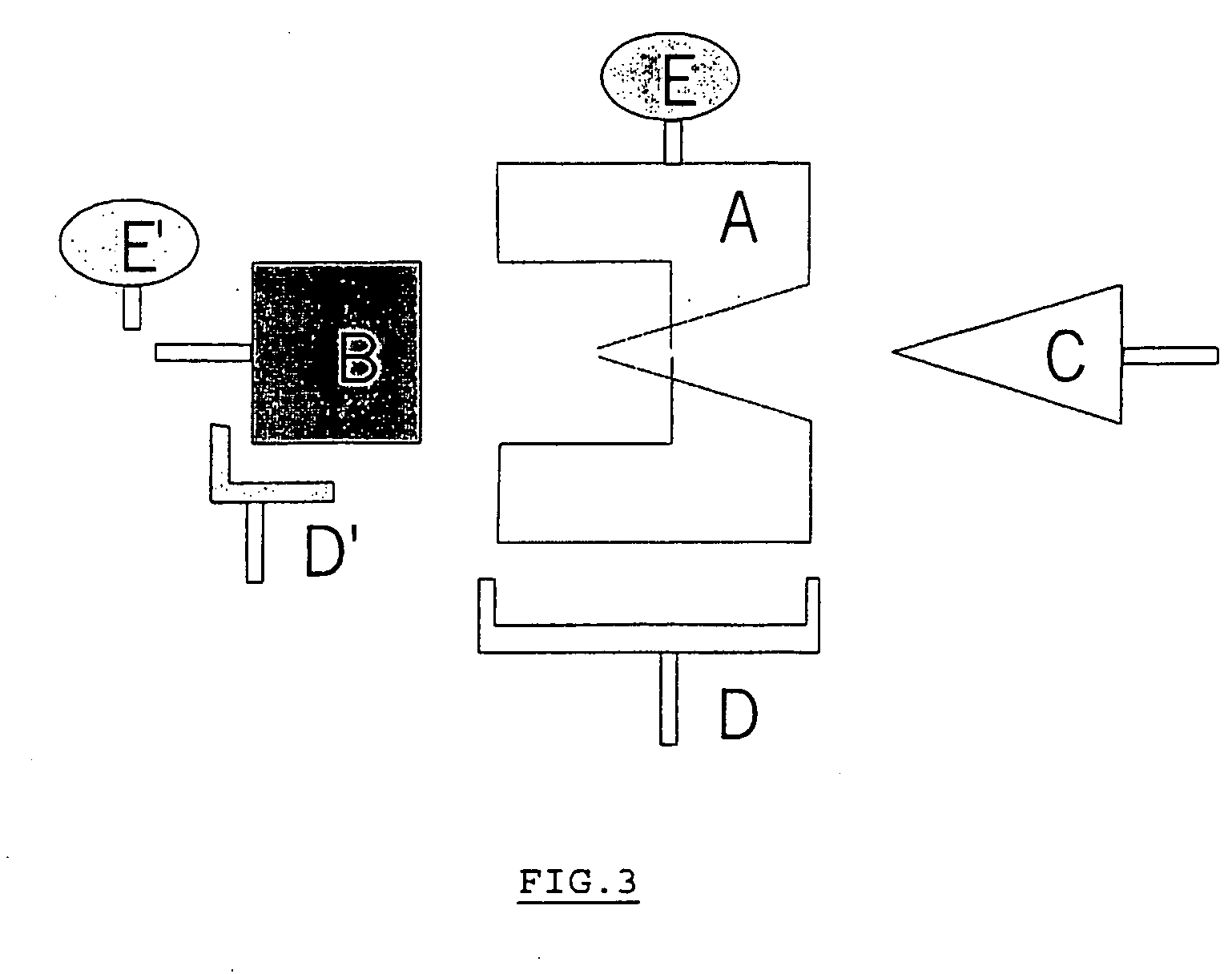Method for performing in vitro diagnosis using gene regulation mechanisms and corresponding diagnosis kit
a gene regulation and in vitro diagnosis technology, applied in the field of in vitro diagnosis using gene regulation mechanisms and corresponding diagnosis kits, can solve the problems of time required for the release of measurable signals, errors or add to the noise in the final measurement, and the cell is fatal
- Summary
- Abstract
- Description
- Claims
- Application Information
AI Technical Summary
Problems solved by technology
Method used
Image
Examples
example 1
[0093] This example demonstrates this invention in the case of measurement in vitro of the level of tetracycline in meat (immunochromatographic technique).
Basic Principle
[0094] The fragment of DNA B is fixed and the receptor A is marked, either directly by a biotin E or indirectly by an antibody D and an A-protein conjugated with particles of colloidal gold. The tetracycline to be detected forms the binding agent C shown in FIG. 3. In this example, the technological tool used to reveal the tetracycline is an immunochromatographic test but a similar version using enzyme marking also works in ELISA. The example demonstrates a measurement of the level of tetracyclines in meat, but the measurement works in just the same manner if the sample is any other biological matrix.
[0095] The preparation of the required elements is described below.
1.1 The Receptor
[0096] TetR is a particularly interesting receptor for tetracycline (Tc). It is a homodimer consisting of 2 identical sub-units e...
example 2
[0137] Example 2 Demonstrates this Invention for the Measurement of the Level of Tetracyclines in Milk (ELISA Technique)
Basic Principle
[0138] In this example, using the terminology of FIG. 3, the receptor A is fixed by means of an antibody D and an A-protein and the DNA B is marked by means of a biotin E′ and avidin peroxidase. In this example, the technological tool used to reveal the tetracycline is an ELISA test but in the case where the marking of the DNA would be done with the help of coloured particles, similar results may be obtained with immunochromatography. In Example 2, ELISA tubes or plates are used. Example 2 shows the measurement of the level of tetracyclines in milk, but the measurement works in exactly the same way if the sample is any other biological matrix.
[0139] The preparation of the required elements is described below.
2.1 The Receptor
[0140] The tetR receptor is produced and purified according to the method described at Point 1.1.1.
2.1.1 Preparation of...
example 3
[0154] Example 3 shows this invention concerning the measurement of the level of tetracyclines without having to resort either to marking with coloured particles or to enzymatic marking. It is solely the presence of the complex formed that is detected. In this example, the recognition of the complex formed is carried out in an indirect manner by means of the Surface Plasmon Resonance technique (SPR technology, Biacore A.B., Uppsala, Sweden).
Basic Principle
[0155] In this example, using the terminology of FIG. 3, the fragment of DNA B (prepared in 1.2.1) is fixed to the Biacore streptavidin chip and the receptor A (prepared in 1.1.1) is used pure without having been marked. In the absence of tetracycline in the medium, the receptor-DNA complex is formed, which prevents the DNA bound to the receptor from attaching to the chip. In the presence of tetracycline, the free DNA always has the freedom to attach to the streptavidin and it is the attachment of the DNA to the chip which gener...
PUM
| Property | Measurement | Unit |
|---|---|---|
| pH | aaaaa | aaaaa |
| pH | aaaaa | aaaaa |
| pH | aaaaa | aaaaa |
Abstract
Description
Claims
Application Information
 Login to view more
Login to view more - R&D Engineer
- R&D Manager
- IP Professional
- Industry Leading Data Capabilities
- Powerful AI technology
- Patent DNA Extraction
Browse by: Latest US Patents, China's latest patents, Technical Efficacy Thesaurus, Application Domain, Technology Topic.
© 2024 PatSnap. All rights reserved.Legal|Privacy policy|Modern Slavery Act Transparency Statement|Sitemap



